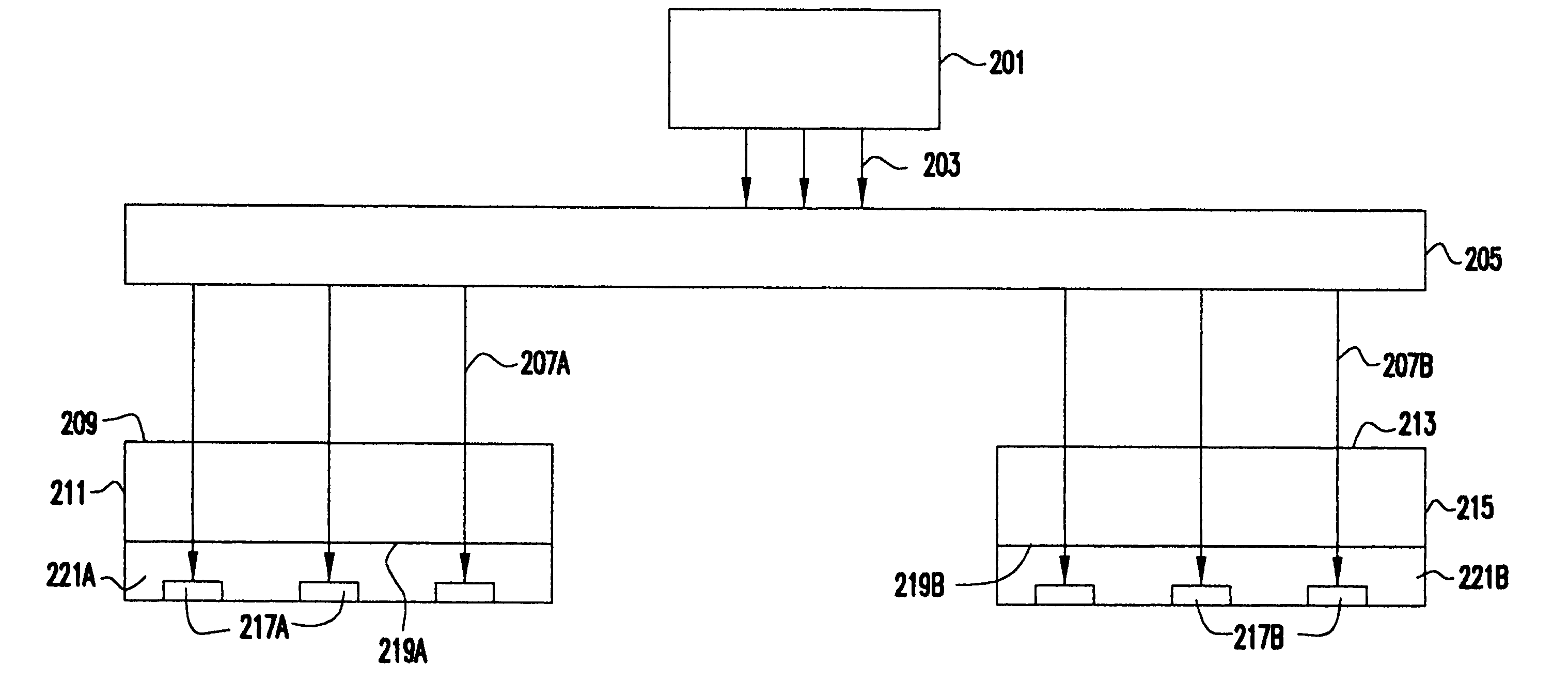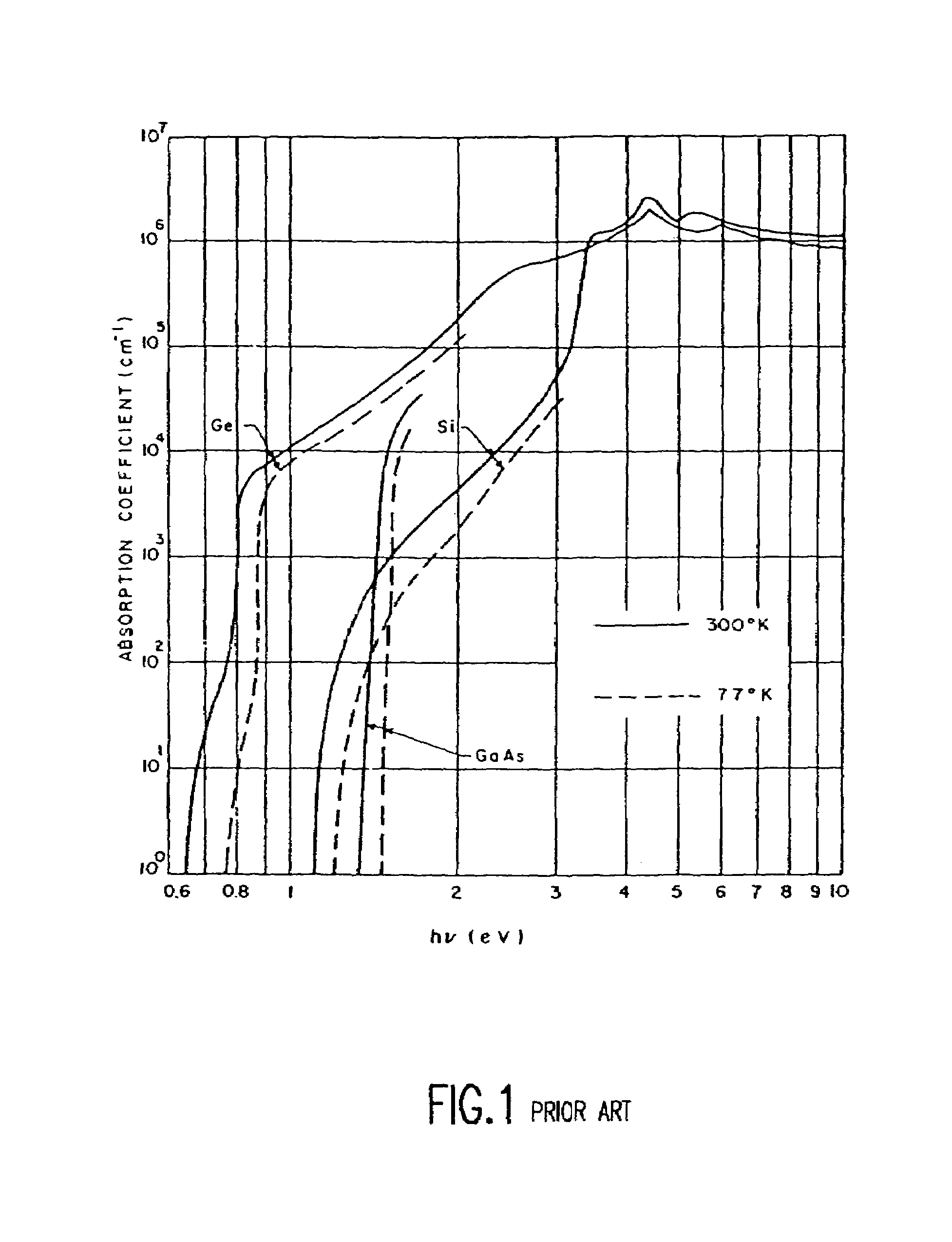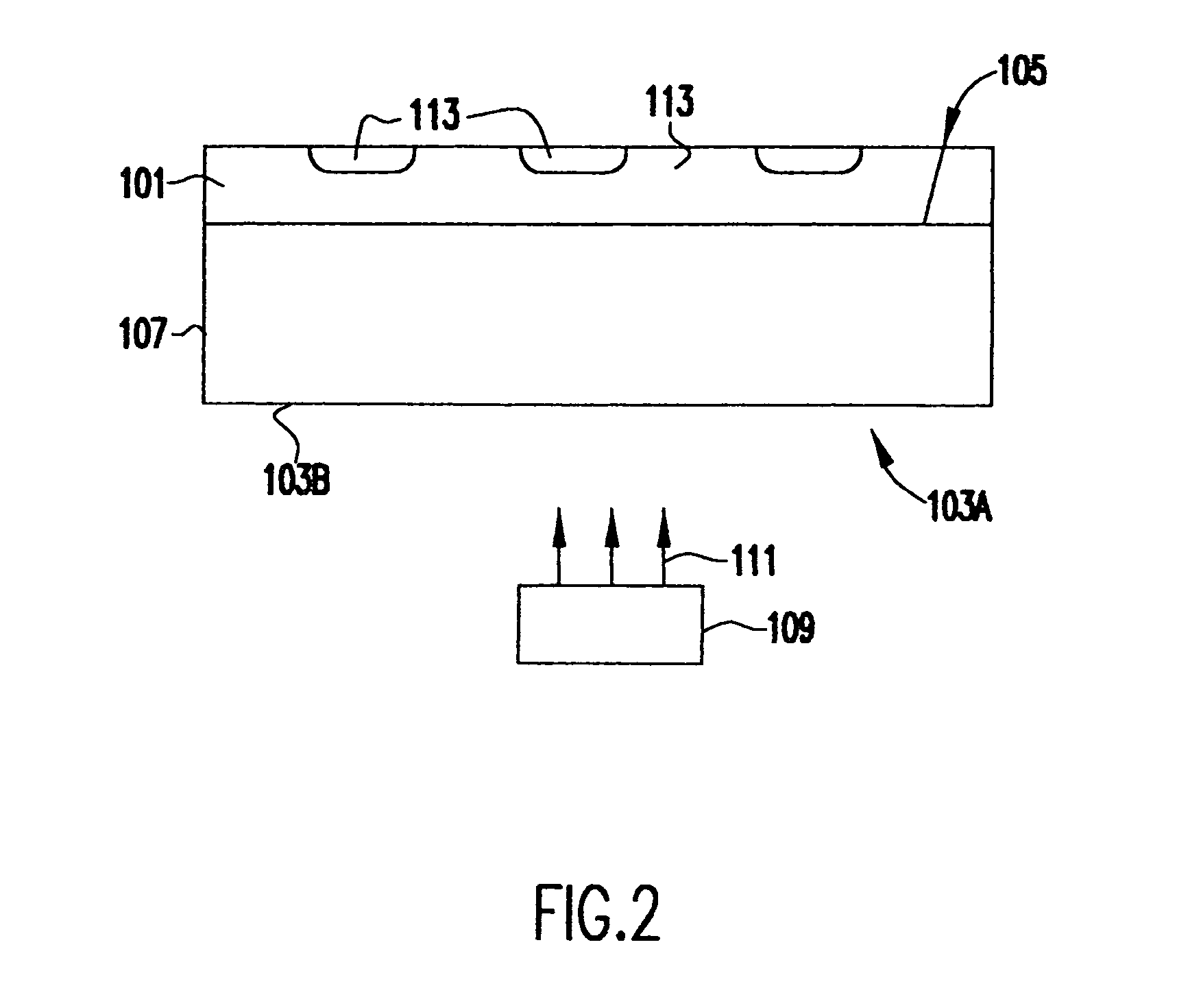SiGe or germanium flip chip optical receiver
a flip-chip optical receiver and flip-chip technology, applied in the field of optical signals, can solve the problems of clock skew, clock skew, and more complex devices typically have a greater number of destinations, and achieve the effect of facilitating optical source being used and optimizing transmission
- Summary
- Abstract
- Description
- Claims
- Application Information
AI Technical Summary
Benefits of technology
Problems solved by technology
Method used
Image
Examples
Embodiment Construction
[0019]The present invention is an improved optical receiver for receiving optical signals in an integrated circuit. Synchronized clocking signals are provided to local circuits on the chip or on many chips with substantially reduced clock skew and with minimal signal degradation while avoiding shadowing by metal interconnect layers on the front surface of the chip. The present invention is particularly suitable for chips mounted face down. In addition to clocking, the present invention is also suitable for providing data, such as digital data for data processing, text, voice, or image to a chip.
[0020]A germanium (Ge) containing layer, such as silicon germanium (SiGe), is formed on a semiconductor substrate, such as a silicon (Si) substrate. The germanium containing layer may have a thickness in the range from less than about 0.1 μm to about 1 μm. Thicker layers can also be formed to absorb more light. The germanium concentration may be graded by gradually increasing the concentratio...
PUM
 Login to View More
Login to View More Abstract
Description
Claims
Application Information
 Login to View More
Login to View More - R&D
- Intellectual Property
- Life Sciences
- Materials
- Tech Scout
- Unparalleled Data Quality
- Higher Quality Content
- 60% Fewer Hallucinations
Browse by: Latest US Patents, China's latest patents, Technical Efficacy Thesaurus, Application Domain, Technology Topic, Popular Technical Reports.
© 2025 PatSnap. All rights reserved.Legal|Privacy policy|Modern Slavery Act Transparency Statement|Sitemap|About US| Contact US: help@patsnap.com



